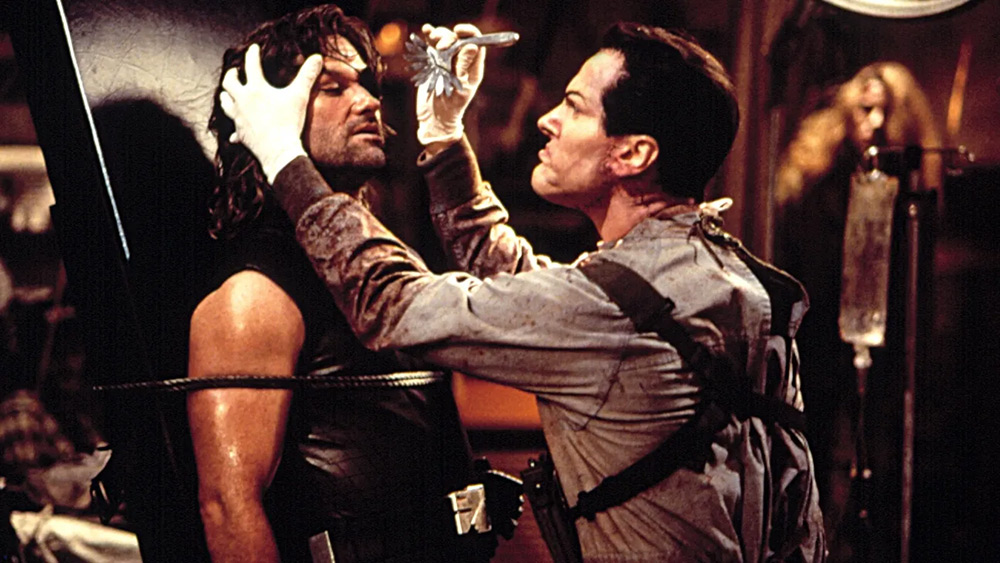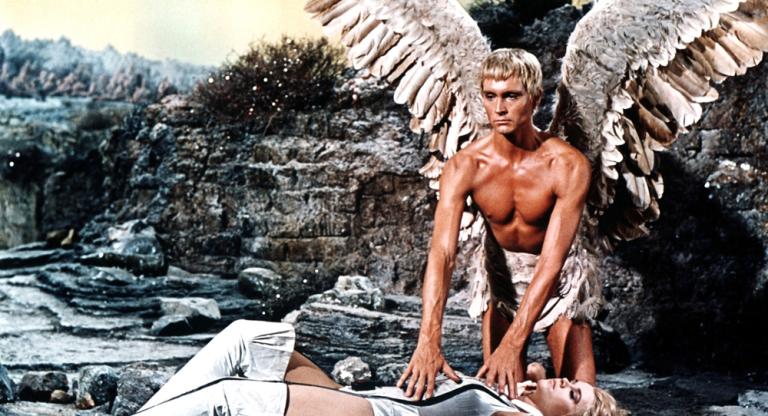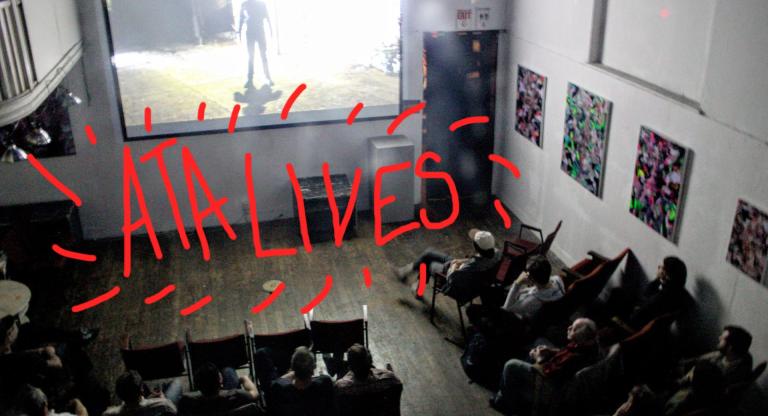In John Carpenter’s Escape from L.A. (1996), a catastrophic earthquake separates Los Angeles from the continental United States at the turn of the millennium, and the city is turned into a maximum security prison. Flash forward to 2013, when the Prison of Los Angeles processes mass deportations and is ruled by a fascist military regime led by a theocratic president elected to a lifetime term. Following the events of Escape from New York (1981), Snake Plissken (Kurt Russell) is transferred to this new inescapable fortress. Director John Carpenter, who shares writing duties with Debra Hill and star Kurt Russell this time around, envisioned a future not far from our current reality, rife with hostility toward immigrants. But he did so with his tongue planted firmly in his cheek.
Escape from L.A. finds the President’s daughter taking control of Air Force Three and demanding that borders be reopened, with the “wrongfully accused” allowed to return to their home countries. If her demands are not met, she will use a weapon of mass destruction against the rest of the U.S. As fate would have it, the government is less interested in Snake as a prisoner and more interested in using him again. This time, his mission is to infiltrate a guerilla army led by Cuervo Jones (Georges Corraface). In return, he is promised a full pardon that would exonerate him of every “immoral action” he has ever committed. The leverage, of course, is that Snake has been injected with a deadly virus and the only means of getting a cure is to follow orders.
Carpenter’s largely maligned sequel to one of his most popular films is a socio-political black comedy that pits Snake against the U.S. government, with a crew of ragtag activists and weirdos joining him in the fight. The supporting cast is a rogue’s gallery of genre cinema stalwarts in roles that would feel like stunt casting if Carpenter wasn’t so sincere: Bruce Campbell as the manic Surgeon General of Beverly Hills; Peter Fonda as a surfing revolutionary named Pipeline; Steve Buscemi as a star tours selling hustler named Eddie; Pam Grier as a trans woman carjacker named Hershe Las Palamas; Robert Carradine as a skinhead named, well, Skinhead; and, last but not least, Paul Bartel as a congressman. The film takes the viewer on a post-apocalyptic tour of Hollywood full of familiar faces and devastated landmarks.
The film is also without its provocations; its anti-deportation stance is prescient, especially considering where it is set. Though Carpenter avoids any real-life government agencies, the black-clad super soldiers in the film operate as an oppressive combination of military combatants and immigration officers, following the orders and whims of a theocratic president that believes L.A. was a city of sin that deserved to be separated from the rest of the Bible-thumping U.S. The city is portrayed as a ruins of bacchanalia with makeshift encampments strewn about Sunset Boulevard whose sole source of light are bonfires. Escape from L.A. is as rebellious a film as we can expect from a major studio in the 1990s. It feels more akin to the politically minded exploitation films that came out of Roger Corman’s studio two decades prior than anything Carpenter’s peers were dropping into multiplexes around the same time. And while it isn’t as remembered, or regaled, as its precursor, Escape from L.A. remains a potent whirlwind of genre efficiency that doubles as a middle finger to conservative government.
Escape from L.A. screens tonight, July 3, at Nitehawk Prospect Park on 35mm as part of the series “Summer in the City.”



